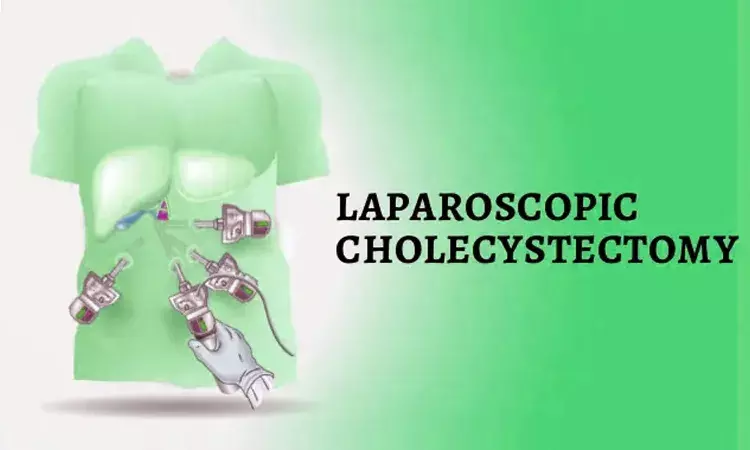- Home
- Medical news & Guidelines
- Anesthesiology
- Cardiology and CTVS
- Critical Care
- Dentistry
- Dermatology
- Diabetes and Endocrinology
- ENT
- Gastroenterology
- Medicine
- Nephrology
- Neurology
- Obstretics-Gynaecology
- Oncology
- Ophthalmology
- Orthopaedics
- Pediatrics-Neonatology
- Psychiatry
- Pulmonology
- Radiology
- Surgery
- Urology
- Laboratory Medicine
- Diet
- Nursing
- Paramedical
- Physiotherapy
- Health news
- Fact Check
- Bone Health Fact Check
- Brain Health Fact Check
- Cancer Related Fact Check
- Child Care Fact Check
- Dental and oral health fact check
- Diabetes and metabolic health fact check
- Diet and Nutrition Fact Check
- Eye and ENT Care Fact Check
- Fitness fact check
- Gut health fact check
- Heart health fact check
- Kidney health fact check
- Medical education fact check
- Men's health fact check
- Respiratory fact check
- Skin and hair care fact check
- Vaccine and Immunization fact check
- Women's health fact check
- AYUSH
- State News
- Andaman and Nicobar Islands
- Andhra Pradesh
- Arunachal Pradesh
- Assam
- Bihar
- Chandigarh
- Chattisgarh
- Dadra and Nagar Haveli
- Daman and Diu
- Delhi
- Goa
- Gujarat
- Haryana
- Himachal Pradesh
- Jammu & Kashmir
- Jharkhand
- Karnataka
- Kerala
- Ladakh
- Lakshadweep
- Madhya Pradesh
- Maharashtra
- Manipur
- Meghalaya
- Mizoram
- Nagaland
- Odisha
- Puducherry
- Punjab
- Rajasthan
- Sikkim
- Tamil Nadu
- Telangana
- Tripura
- Uttar Pradesh
- Uttrakhand
- West Bengal
- Medical Education
- Industry
Local anesthetic infiltration eases postoperative pain after laparoscopic cholecystectomy

THAILAND: In patients undergoing laparoscopic cholecystectomy, local anaesthetic infusion into the rectus sheath decreased postoperative cumulative morphine utilization and the immediate NRS score, states a study published in BJS Open.
In the entire globe, cholecystectomy is one of the most common procedures. As opposed to an open procedure, laparoscopic cholecystectomy (LC) is associated with less postoperative discomfort, quicker recovery, and a shorter hospital stay. Postoperative pain is nevertheless a problem, particularly in the first 24 hours. There are numerous techniques for reducing postoperative pain, including local anesthetic infiltration, which is frequently employed and may expedite patient recovery but whose efficacy is still debatable.
In order to examine the impact of various levels of local anesthetic infiltration on postoperative pain management in patients undergoing LC, this randomized clinical study (RCT) was conducted.
For this objective, between March 2018 and February 2019, elective LC patients were divided into three groups: no infiltration, subcutaneous infiltration, and rectus sheath infiltration using bupivacaine. Out of 170 eligible patients, 162 were chosen, and 150 were analyzed; 48 were placed in the no-infiltration group, 50 were placed under the subcutaneous infiltration group, and 52 were placed in the rectus sheath infiltration group. The 24-hour postoperative cumulative morphine consumption was the major outcome, while the mean 24-hour Numerical Rating Scale (NRS) for pain, nausea, and vomiting were the secondary outcomes. Multivariable analyses were carried out, and subgroup comparisons were made.
Key findings of the trial:
- Although the mean BMI was greater in the subcutaneous infiltration group (P = 0.001), the groups shared similar clinical characteristics.
- There was no difference between the subcutaneous infiltration and no-infiltration groups (P = 0.999), although the 24-hour cumulative morphine consumption in the rectus sheath infiltration group was considerably lower than in the no-infiltration group (P = 0.043).
- The NRS score did not differ between the three groups at any of the time points from 2 hours after the surgery, but the rectus sheath infiltration group had a significantly lower score than the no-infiltration and subcutaneous infiltration groups at that point (P = 0.006 and P = 0.031, respectively).
- Between the three groups, there was a comparable incidence of nausea or vomiting.
- According to multivariable analysis, increasing morphine usage was linked to age (P = 0.040) and a longer length of operation (P = 0.007), whereas decreased morphine use was linked to rectus sheath infiltration (P = 0.004) and diabetes (P = 0.001).
Although subcutaneous infiltration alone has little effect on pain control, deep local anesthetic infiltration into the rectus sheath reduces early (within 2 h) postoperative pain scores and usage of morphine throughout the first postoperative day after LC, concluded the authors.
REFERENCE
Wikran Suragul, Apawee Tantawanit, Narongsak Rungsakulkij, Paramin Muangkaew, Pongsatorn Tangtawee, Somkit Mingphrudhi, Watoo Vassanasiri, Panuwat Lertsithichai, Suraida Aeesoa, Worapot Apinyachon, Effect of local anaesthetic infiltration on postoperative pain after laparoscopic cholecystectomy: randomized clinical trial, BJS Open, Volume 6, Issue 3, June 2022, zrac066, https://doi.org/10.1093/bjsopen/zrac066
Dr Kamal Kant Kohli-MBBS, DTCD- a chest specialist with more than 30 years of practice and a flair for writing clinical articles, Dr Kamal Kant Kohli joined Medical Dialogues as a Chief Editor of Medical News. Besides writing articles, as an editor, he proofreads and verifies all the medical content published on Medical Dialogues including those coming from journals, studies,medical conferences,guidelines etc. Email: drkohli@medicaldialogues.in. Contact no. 011-43720751


